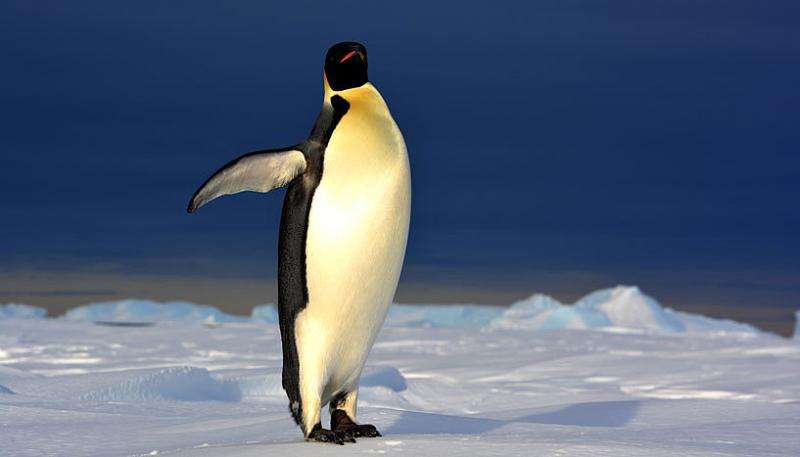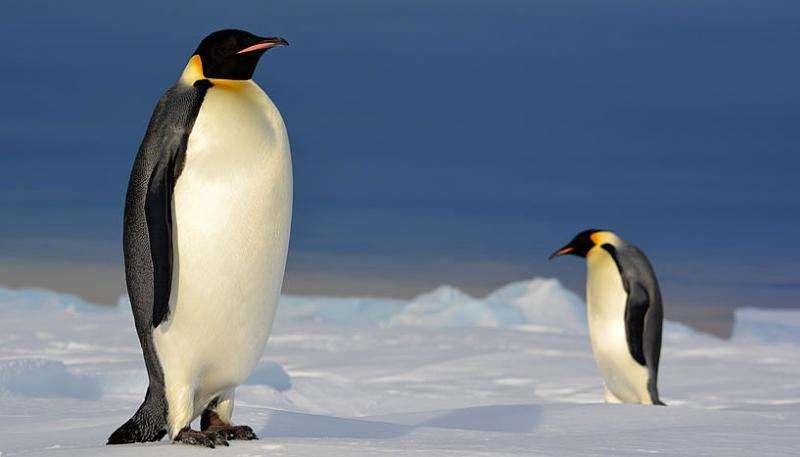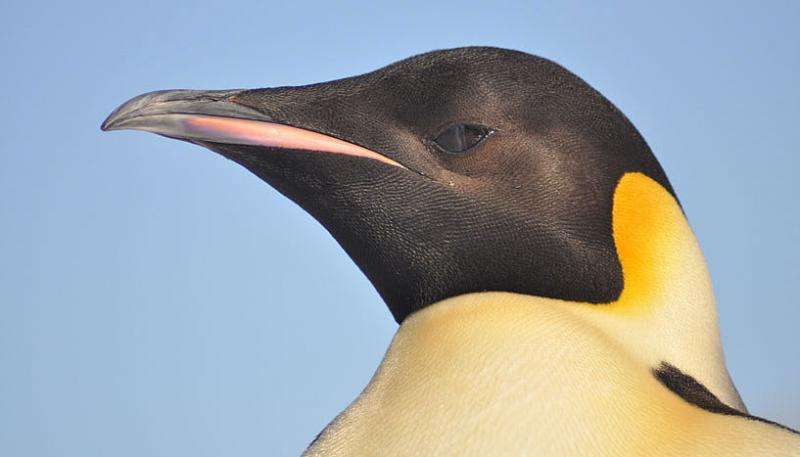Full circumpolar migration ensures evolutionary unity in the Emperor penguin

No colony is an island or a remote patch on sea ice on the coast of Antarctica. Emperor penguins move all around the frozen continent making one single interbreeding population for the whole species. A single circumpolar population! Even though fidelity for the natal site is calling most of the individuals back to mate and rear their chicks in the colony they were born, a constant dispersal every generation is producing the fully admixed genetic pattern found by Cristofari and co-authors and published in prestigious journal Nature Communications this week.
"Our data also suggest that when a colony location is suddenly wiped out by a catastrophic event, as it happened following the calving of the Mertz Glacier, all the individuals have at once to find another good breeding spot" says Dr. Céline Le Bohec, from the CNRS-UniStra and the Centre Scientifique de Monaco, senior author in the study and leader of one of the programme of the French Polar Institute Paul-Emile Victor (IPEV). Through an international collaborative work between Norway, Italy, USA, UK, Germany, Austria, France and Monaco, researchers employed a vast genomic dataset to reconstruct the genetic structure of the species and estimate the migration rate among six colonies of emperor penguins, some of which separated by 8000 km of coast line. When they leave the natal colony for the first time, juveniles spend two-three years, mostly at sea, before attempting to reproduce.
From direct survey of the colony of Dumont D'Urville (Pointe Géologie, Terre Adélie), we realized that between 15 to 20% of them never come back. Besides some that don't make it, now we know that around 5% of all juveniles find a new colony to join. In some cases, researchers observing a sudden decrease in colony population size often explained it by high mortality linked to harsh environmental conditions during a given year. Massive dispersal can now also be considered as an alternative explanation.

Implications of this finding are many-fold. Emperor penguins are commonly employed as bio-indicator of the delicate Antarctic ecosystem as they are particularly sensitive to climate change being at the top of local trophic web. "So far, model projecting the fate of this species were based on the assumption of no migration among colonies" says Dr. Robin Cristofari, from the CNRS-UniStra-CSM, "now new models have to be designed, likely leading to more accurate predictions about the future of this iconic species."
This study indeed reveals that each colony can count on a much bigger reservoir of genetic diversity than we thought to face a changing environment: actually on all the diversity that exists in the species. "Diversity is the raw material of evolution, so the more the better" confirmed Dr. Emiliano Trucchi, the other senior author in the study from the University of Vienna. And this is the good news. The not so good one is that they cannot move anywhere else apart from the Antarctic continent, so if the global warming keeps the current fast pace, there might be not enough time to adapt and the whole set of rare and incredible adaptations for a life in the coldest place on Earth could be gone for good. They did just fine over the last million years, let's try not to be us melting their icy home.

More information: Robin Cristofari et al. Full circumpolar migration ensures evolutionary unity in the Emperor penguin, Nature Communications (2016). DOI: 10.1038/ncomms11842
Journal information: Nature Communications
Provided by University of Vienna





















